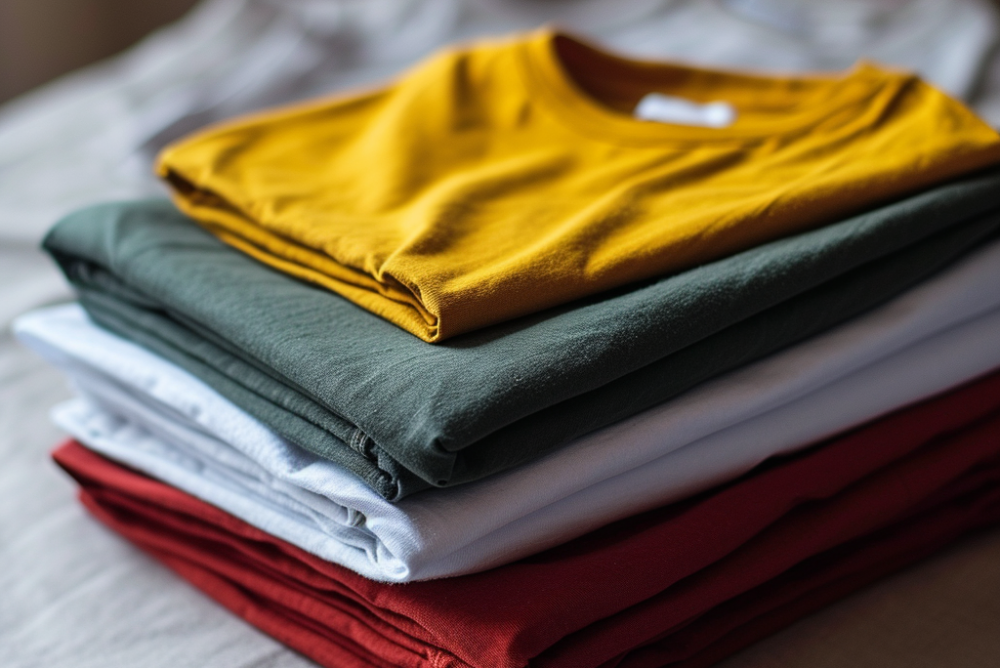Stop Your Cotton T-Shirts From Deforming: Care & Maintenance Tips


Cotton t-shirts are a wardrobe staple for many people. Their soft, breathable fabric makes them a comfortable clothing option for daily wear. However, cotton is prone to shrinking, stretching, and other deformations if not cared for properly. Deformed t-shirts lose their shape and don't drape well on the body. Fortunately, there are steps you can take to prevent cotton shirt deformation and increase the longevity of your t-shirts.
The most common causes of cotton t-shirt deformation include:
- High heat washing or drying: Excessive heat causes cotton fibers to tighten and shrink.
- Improper washing cycles: The agitation of certain wash settings can stress and stretch the cotton fibers.
Wire hangers: Wire hangers can stretch out the shoulders and neckline. - Too much detergent: Detergent residues can degrade cotton over time.
- Bleach: Bleach breaks down cotton fibers, causing weakness.
- Fabric softener: Buildup of softener chemicals can affect the elasticity.
By following proper care methods, you can prevent damage to the cotton fibers and maintain the original shape and fit of your t-shirts. The key steps include using proper washing, drying, storage, and ironing techniques for cotton material.
Proper Washing Techniques
When laundering cotton t-shirts, use lower temperature water settings to avoid shrinkage from high heat. Warm or cold water is ideal. Always check clothing labels for the manufacturer's recommended washing temperature.
Use a mild, gentle laundry detergent intended for cotton and other delicate fabrics. Liquid detergents are a better choice than powder detergent, which can leave residue on the fabric. Measure carefully and avoid using too much detergent, as excess detergent can degrade cotton over time.
Wash cotton t-shirts on a gentle or delicate cycle, which uses slower agitation to reduce stretching and pulling on the fabric. Some washing machines also have settings specifically for cottons that are ideal.
When possible, skip the spin cycle. High-speed spinning can damage cotton fibers and cause garments to stretch out. If you need to spin, opt for a low or medium spin speed.
Consider washing cotton shirts by hand for the most controlled wash and rinse. This allows you to gently massage the detergent through the fabric to lift stains and soil without damage.
Drying Methods
To prevent shrinkage, air dry cotton t-shirts flat or line dry them instead of using a clothes dryer. Lay t-shirts flat on a drying rack or towel and reshape while still slightly damp. Hanging wet t-shirts on a clothesline also minimizes shrinkage.
If machine drying, use the lowest heat setting. Remove shirts immediately after drying to prevent over-drying.
Use fabric softener sheets sparingly when drying cotton shirts. The chemicals in dryer sheets can coat the fibers and diminish the cotton’s ability to absorb moisture.
Do not overcrowd the dryer, which prevents proper air circulation. Give shirts room to tumble freely.
Proper Storage
Fold cotton t-shirts neatly and store them in dresser drawers to help shirts hold their shape. Refolding after laundering maintains the original shape.
Avoid wire hangers, which stretch out the shoulder area creating misshapen necklines. Instead use rigid, heavyweight plastic hangers. These maintain the shirt's form.
Store cotton shirts in a cool, dark place. Heat and sunlight can degrade and discolor the cotton fibers over time.
Ironing Cotton Shirts
Always iron cotton t-shirts inside out. This places the heat directly on the inner seams and allows you to shape the shirt on the backing of the ironing board.
Use the appropriate heat setting for cotton, usually a medium temp. Too much heat can scorch or singe cotton fabric.
Avoid using excess pressure when ironing. Let the heat do the work; pushing down hard can misshape delicate cotton.
Consider steam ironing cotton shirts for a sharp, crisp look. The steam helps relax wrinkles and refreshes the fibers.
Other Care Tips
- Follow the fabric care instructions on the label for best results.
- Wash white and colored cotton shirts separately to avoid colors bleeding.
- Avoid using bleach, which degrades cotton fibers over time.
- Skip the fabric softener, which can coat fibers and reduce the cotton’s ability to absorb moisture.
- Wash shirts inside-out to protect embellishments and graphics.
- Remove stains promptly with an oxygen-based bleach alternative. Do not over scrub.
- Wash shirts after every 2-3 wears to avoid odor retention issues.
Conclusion
Cotton t-shirts are versatile wardrobe basics that can last for years when properly cared for. By washing, drying, storing, and ironing cotton shirts correctly, you can prevent damage to the cotton fibers that leads to shrinking, stretching, discoloration, and other deformations. Handle cotton gently, avoid excessive heat, and follow fabric care recommendations for optimal results. With proper care, your favorite cotton tees will maintain their fit, soft feel, and good looks season after season.





-500x500.jpg)
-500x500.jpg)
-500x500.jpg)
-500x500.jpg)
-500x500.jpg)